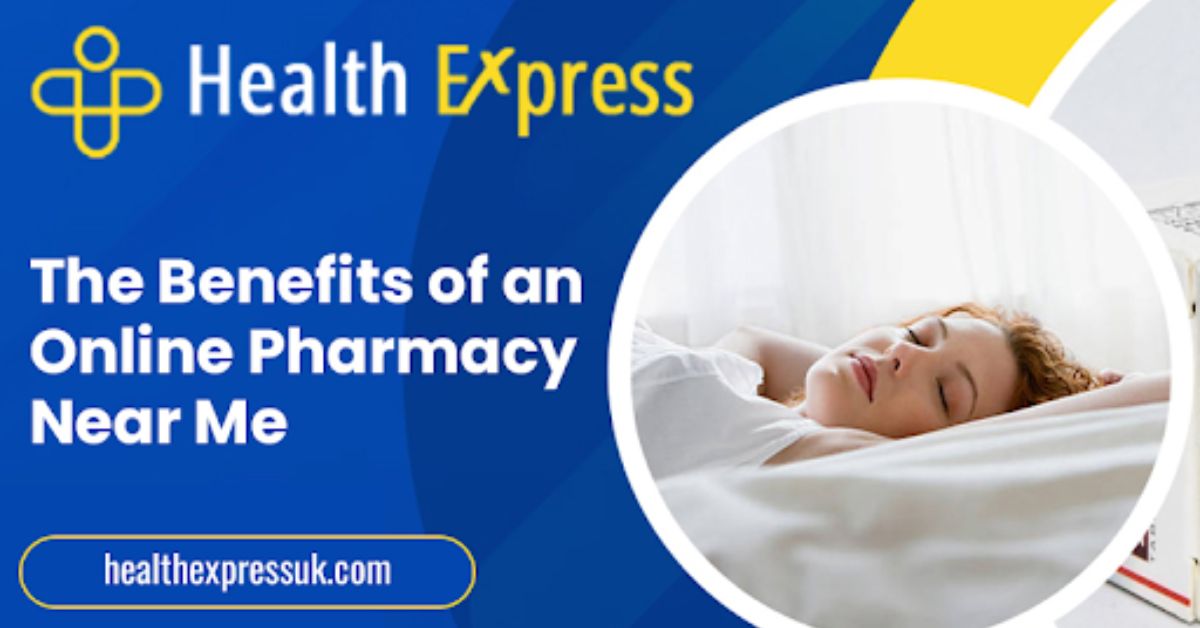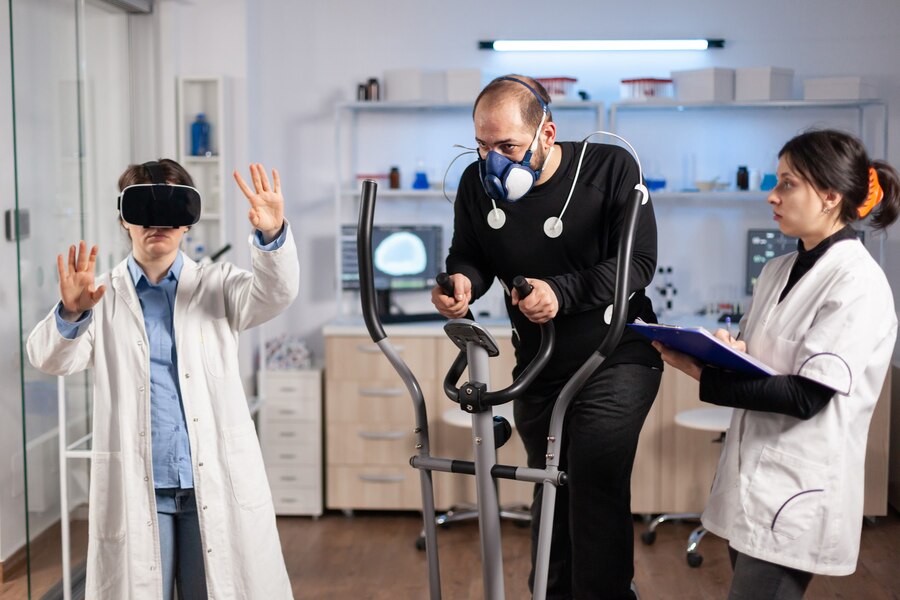HEALTH
TheHealthyPrimate.org: Your Guide to Holistic Wellness

In today’s fast-paced world, where stress and anxiety can weigh us down, health-conscious individuals increasingly turn to credible wellness platforms like TheHealthyPrimate.org. This blog has become a go-to resource for anyone looking to improve their physical, mental, and emotional well-being.
As we explore the unique aspects of TheHealthyPrimate.org, this article will provide a humanized, reader-friendly overview of its offerings. We’ll also dive into how this blog has helped countless people achieve better health, with an informative chart highlighting the key sections and services provided.
Why TheHealthyPrimate.org Stands Out
At its core, TheHealthyPrimate.org isn’t just another health blog. What sets it apart is its holistic approach to well-being. With a deep understanding of the connection between the mind and body, the blog aims to provide actionable advice rooted in scientific research, personal experiences, and ancient wellness practices.
From meditation techniques to dietary recommendations, TheHealthyPrimate.org offers a wide range of resources that cater to all aspects of health. Its unique focus on natural methods and supplements for stress relief, mental clarity, and overall vitality make it a trusted source for those looking to improve their quality of life.
Key Areas of Focus on TheHealthyPrimate.org
- Stress Management
Stress has become a ubiquitous issue in today’s society. TheHealthyPrimate.org takes an evidence-based approach to stress relief, offering readers practical tools like breathing exercises, mindfulness practices, and natural supplements designed to calm the mind. The blog’s comprehensive guides on stress management are some of its most sought-after content. - Mental Health
Mental well-being is just as important as physical health, and TheHealthyPrimate.org understands that. Articles on the blog cover a range of mental health topics, including anxiety reduction, improving focus, and maintaining emotional balance. The emphasis on self-care routines helps readers develop a resilient mindset, empowering them to handle life’s challenges more effectively. - Nutrition and Diet
Nutrition plays a fundamental role in achieving and maintaining optimal health. The blog features extensive content on clean eating, plant-based diets, and superfoods that provide essential nutrients. You’ll find detailed meal plans, smoothie recipes, and even advice on managing food sensitivities, all curated by health experts who prioritize sustainability and balance in dietary choices. - Supplements and Natural Remedies
With the rise of synthetic medications, TheHealthyPrimate.org advocates for a return to nature. The blog highlights various supplements, herbs, and natural remedies that support everything from immune health to cognitive function. There’s a particular emphasis on adaptogens like ashwagandha, rhodiola, and medicinal mushrooms, all of which are shown to help the body adapt to stress. - Fitness and Exercise
Whether you’re a seasoned athlete or just starting out on your fitness journey, TheHealthyPrimate.org has something for everyone. With easy-to-follow workout routines, tips on injury prevention, and advice on building strength and flexibility, this section of the blog helps readers find the best exercises for their unique needs and fitness levels. - Sleep and Recovery
Quality sleep is the cornerstone of good health. The blog provides in-depth articles on improving sleep hygiene, understanding circadian rhythms, and natural ways to enhance relaxation before bed. The recovery section also focuses on muscle repair and the benefits of rest after intense physical activity.
Benefits of Following TheHealthyPrimate.org
Following TheHealthyPrimate.org can transform the way you approach your health and wellness journey. The blog not only serves as a reliable source of information but also acts as a community for those who are committed to long-term well-being.
1. Expert Contributions
One of the highlights of TheHealthyPrimate.org is the content provided by health professionals. The articles are written or reviewed by certified nutritionists, fitness trainers, mental health experts, and herbalists, ensuring that the advice is both reliable and safe.
2. Personalized Health Guidance
Unlike other generic health blogs, TheHealthyPrimate.org offers personalized advice based on individual needs. For example, readers can find targeted solutions for specific health concerns, such as chronic stress, anxiety, or poor digestion. By following these custom guides, users can make informed decisions to improve their overall well-being.
3. Community Engagement
The blog fosters an active community where readers can interact with one another, share experiences, and offer support. Engaging with like-minded individuals on similar health journeys provides motivation and accountability, which are crucial for sustaining long-term habits.
Optimizing Your Wellness Routine: A Practical Guide
To get the most out of TheHealthyPrimate.org, it’s essential to integrate its advice into your daily routine. Here’s a practical approach to making the most of the blog’s resources:
- Start Small: If you’re new to the wellness space, don’t overwhelm yourself by trying to implement everything at once. Begin with a few manageable steps, like adding a five-minute meditation or swapping out processed snacks for healthier alternatives.
- Track Your Progress: Keeping track of your mental and physical improvements can motivate you to stay consistent. Journaling about your mood, energy levels, and sleep quality can help you see the impact of your new habits.
- Stay Curious: Wellness is an ever-evolving journey. Explore different sections of TheHealthyPrimate.org regularly to stay updated on the latest health trends and practices.
Informative Chart: Key Sections of TheHealthyPrimate.org
| Section | Focus | Benefits |
|---|---|---|
| Stress Management | Natural stress relief techniques and supplements | Reduces anxiety, improves focus, enhances emotional balance |
| Mental Health | Articles on emotional resilience and mental clarity | Boosts mental well-being, reduces stress, promotes positivity |
| Nutrition and Diet | Clean eating guides, recipes, and meal plans | Improves digestion, enhances energy, supports weight management |
| Supplements and Remedies | Natural remedies for immunity and vitality | Boosts immune system, improves cognitive function, reduces stress |
| Fitness and Exercise | Custom workouts and injury prevention tips | Improves strength, flexibility, and overall fitness |
| Sleep and Recovery | Articles on sleep hygiene and recovery techniques | Enhances sleep quality, accelerates muscle recovery, reduces fatigue |
Why SEO Optimization Matters for TheHealthyPrimate.org
Search engine optimization (SEO) plays a pivotal role in the blog’s ability to reach a wider audience. By focusing on relevant keywords like “natural stress relief,” “holistic wellness,” and “mental health tips,” TheHealthyPrimate.org ensures that its valuable content is easily discoverable by people seeking reliable wellness advice. Optimized titles, meta descriptions, and internal linking strategies further contribute to the blog’s visibility on search engines like Google.
By effectively utilizing SEO, TheHealthyPrimate.org has positioned itself as a top destination for health and wellness enthusiasts, ensuring that those in need of practical, science-backed advice can find the resources they require.
Conclusion
In the crowded landscape of health blogs, TheHealthyPrimate.org stands out as a beacon of holistic well-being. By focusing on the interconnectedness of mental, emotional, and physical health, it provides readers with a comprehensive guide to living a balanced, fulfilling life.
Whether you’re looking for stress management techniques, natural supplements, or fitness routines, TheHealthyPrimate.org offers a treasure trove of information to help you reach your wellness goals. So, dive into the blog, engage with the community, and begin your journey toward better health today!
HEALTH
Types of Slings for Disabled Hoists: Choosing the Right Fit for Your Needs

When utilising disabled hoists, the choice of sling is critical in determining the comfort, safety and ability to mobilise the user. This blog will highlight the significance of hoist slings for individuals with disabilities, detailing their essential features and explaining how CHS Healthcare hoist slings are dependable choices for ensuring smooth and long-lasting support for participants during their daily activities.
Types of Slings for Disabled Hoists
Universal Slings
Universal slings are preferred, especially for their convenience. They come in all sizes and designs, with basic model designs and back and leg supports. Universal slings are easily adjustable; they can serve patients of any size requiring a transfer from a couch, chair, or bed.
Key Benefits:
- One of its benefits for caregivers and patients is that it is easy to use.
- It is beneficial for transitions between sitting and standing, which increases their convenience.
- Often available in various sizes to cater to different body types.
Full-Body Slings
It provides complete support from head to toe. They surround the entire body and keep the holder safely confined during lifting. This sling is beneficial, especially for patients who cannot control their head or trunk movement.
Key Benefits:
- Enhanced support for individuals with more severe mobility impairments.
- Minimises the risk of slipping or sliding during any move.
- Provides peace of mind for both the caregiver and the individual being lifted.
Standing Slings
Standing slings are explicitly designed for individuals who can bear weight on their legs but require assistance with balance and stability. These slings often feature a cut-out section for the legs, allowing the person to maintain standing during transfers.
Key Benefits:
- Encourages mobility and independence for individuals who can stand.
- It makes it easier to transition to and from seated positions.
- It supports natural standing posture, which can be beneficial for physical health.
Bariatric Slings
These slings are specially engineered to accommodate more prominent individuals. They are reinforced and have a broader base to ensure safety and comfort. These slings are essential for individuals who exceed standard weight limits, providing necessary support without compromising safety during lifting.
Key Benefits:
- They are designed to support higher-weight capacities safely.
- It is built with durability in mind, using more robust materials.
- Ensures comfort and security for more prominent individuals, reducing anxiety during transfers.
Sling with Head Support
For individuals with limited head control, slings with head support can make a significant difference. These slings include additional padding or a structured area to support the head, helping to keep it stable during lifting.
Key Benefits:
- Provides crucial head and neck support for those who require it.
- Minimises discomfort and the likelihood of a client developing issues, allowing the physician to transfer them effectively.
- Bears affinity to offer consolation to the caregiver and the individual under their care.
Mesh Slings
These slings are made from light fabrics that allow air to get through. This feature makes them easy to clean and ideal for moisture-sensitive areas, such as washing and swimming.
Key Benefits:
- Specifically suitable for use when taking a bath or swimming, ensuring clean and enjoyable feet.
- This makes it easy for caregivers due to their relatively lightweight nature.
- Quick drying capabilities prevent mildew and odour.
Custom Slings
Custom slings offer tailored solutions for individuals with unique needs. Healthcare professionals can design these slings based on specific assessments, considering factors such as body shape, size, and any medical conditions that may impact mobility.
Key Benefits:
- Personalised fit ensures maximum comfort and support.
- Addresses specific challenges that standard slings may need to accommodate.
- Enhances safety during transfers by providing a tailored solution.
How to Select the Right Sling
The selection process of appropriate slings is complex and is inclusive of. Here are some practical steps to guide you through the selection process:
- Assess Individual Needs: The following factors should, therefore, be considered: location, strength, and medical disabilities. This evaluation will inform the user of their decision regarding the level of support and type of sling.
- Consider the Type of Transfers: Assess whether the transfers will involve sitting or standing or if they need to accommodate specific positions, such as moving to a chair, bed, or bathroom. This will help ensure the right equipment is selected.
- Weight Capacity: It is essential to carefully assess whether the weight capacity of the sling is suitable for the user’s weight when choosing a bariatric sling. Ensuring the sling can safely support the individual will enhance their comfort and security during transfers.
- Comfort and Fit: Ensure the sling is secure yet not overly tight, providing comfortable support for the baby’s body weight. It’s essential to look for features such as padded sections, which enhance comfort and prevent irritation during use, promoting a positive experience for both caregiver and patient.
- Ease of Use: Consider the importance of quick-release features and how easily one can disconnect the sling from the hoist. Features like quick-release buckles can significantly enhance convenience and efficiency during transfers, making procedures smoother and more manageable for caregivers and users.
- Consult Healthcare Professionals: It is essential to talk with diverse healthcare providers, including physiotherapists or occupational therapists, primarily based on an intensive assessment of the character’s condition. Their knowledge can provide precious insights and tailor-made pointers that beautify treatment plans and improve average health consequences for the patient.
- Trial and Evaluation: It is recommended that the individual experiment with various types of slings to determine which ones provide the best comfort and mobility, enhancing their overall experience and support.
In a Nutshell
Using slings in inappropriate ways may make it impossible for supporters to hoist the disabled person safely and may be challenging. Understanding the different types of slings typically used by caregivers will assist them in choosing the most suitable sling for individuals with disabilities in their care, ultimately aiming to improve their mobility and overall quality of life.
Consider the guidelines from CHS Healthcare for hoist slings, or professionals should be consulted to determine the safest and most appropriate course of action.
HEALTH
The Benefits of an Online Pharmacy Near Me

There are several advantages that come with the use of internet pharmacies that can improve the accessibility and overall management of health. Internet pharmacies are very convenient, since you can order the medications from the comfort of your home. This is especially helpful for those with mobility problems, little time, or those who reside in rural areas.
It means that you can order and receive your medications without the need to go to a physical chemist. Most of the internet pharmacies are open 24/7, so you can order your medications at any time. At our digital drug store we offer licensed and approved sleeping pills, nootropics, anxiety medications and painkillers prescription free. Read on for all you need to know about a 24 hour pharmacy near me.
Choose the Right 24 Hour Pharmacy Near Me
It is crucial to confirm the authenticity of an online pharmacy near me before ordering drugs, as this will help in getting genuine medication. The first step is to verify whether the chemist is licensed and accredited by the relevant authorities. In the UK, a legal internet dispensary should be listed with the General Pharmaceutical Council (GPhC).
Another way to quickly confirm the authenticity of an internet platform is to establish a direct line of communication with the website. Here you can direct any questions and get an idea of the service. It is also important to look for a review feature and make sure the platform has safe payment methods. Look for recent reviews and trusted payment options.
Better Selection
An online pharmacy near me is more extensive than a physical drug store, and offers more benefits to consumers. Internet pharmacies can order and dispense a wider range of products than local pharmacies due to fewer physical space constraints. This enables them to stock a large number of prescription drugs and specialty products that may not be easily accessed in a local store.
Specialty medications can also be easily obtained from internet pharmacies. These may include treatment for uncommon diseases, expensive drugs, or drugs that need particular conditions before use. An online pharmacy near me not only provides more choice to the consumer, but can be more cost effective.
The Importance of Patient Reviews
Patient feedback from an online pharmacy near me is very important in the health sector, because they offer information that can be useful to both the patients and caregivers. These reviews provide practical experiences that can supplement clinical information, and contribute to the formation of how a medication functions in daily life.
Even though clinical trials offer valuable information regarding the efficacy of a drug, they are performed in a controlled environment that may not be similar to the real world.
Educate Yourself
An online pharmacy near me is useful in that it contains a lot of information on medications, increases patient awareness, and improves patient decision-making. Most internet pharmacies give a clear description of each drug they sell, the purpose of the drug, how it works, and the diseases it is used to cure. Such information assists the patient to know why a certain drug has been administered, and how it will affect the body.
Information on how to use the medication is normally given, such as the dosage, the time that is most appropriate to take the medication, and whether it is to be taken with food or not. You can also learn where to find a 24 hour pharmacy near me.
Privacy Guaranteed
An online pharmacy near me is very important in that it gives patients with embarrassing health conditions the privacy and anonymity they desire. Such a level of discretion is especially useful for people who may not seek help because of the stigma attached to their condition. Patients can order drugs from the comfort of their homes, and this saves them from having to interact with a pharmacist in person.
It is particularly helpful for diseases such as sexual disorders (erectile dysfunction, sexually transmitted diseases), mental disorders, or diseases that some people may find uncomfortable to talk about.
Web-Based Consultation
An online pharmacy near me provides live chat with a pharmacist, which makes it easier for the patient to seek professional advice. This service is intended to mimic the important conversations that may happen in a more conventional chemist setting, where a patient may ask questions and get advice from a pharmacist.
No matter whether a patient has a query about a new prescription, side effects of a medicine, drug interactions or any advice regarding the use of medicines, he or she can get the information immediately from a licensed pharmacist. It is more convenient to talk to a pharmacist on the internet than to visit them in person.
Summary
An online pharmacy near me is a popular site for purchasing drugs due to the numerous advantages that it presents in terms of flexibility, discretion and availability. They offer a wider range of drugs and allow patients to take control of their health by providing information about medications and personal recommendations.
Internet pharmacies also enable patients to have discreet ways of handling certain illnesses that may be embarrassing to the patient. The concept of internet pharmacies has been a perfect fit for today’s world as it combines convenience with professional assistance and gives patients more control over their health without the need to share personal information at a 24 hour pharmacy near me.
About the Author
Dr John Montgomery is a professional and friendly physician with more than 25 years of experience in the pharmaceutical industry, with a focus on managing pain conditions. He is based in London, who completed his education at the University College London, and has also taken a Postgraduate Certificate in Clinical Pharmaceutical.
His career has been focused on enhancing the quality of life of his patients through patient education and a comprehensive approach to healing. His deep understanding and knowledge make him a well-respected and valued part of the pharmaceutical community. Follow Dr Montgomery on linkedin and x.com.
Learn where to find an online pharmacy near me at healthexpressuk.com.
HEALTH
Benefits and Applications of Virtual Reality in Post-Accident Physical Therapy

Recovering from an accident can be a long and challenging process, but advancements in virtual reality (VR) technology are revolutionizing how physical therapy is delivered. From immersive simulations to real-time feedback, VR is helping patients regain mobility, build strength, and overcome pain in innovative ways.
For those in Mount Juliet dealing with injuries from accidents, connecting with a Mount Juliet personal injury attorney can ensure you receive compensation to cover cutting-edge treatments like VR therapy.
The Basics of VR in Physical Therapy
Virtual reality physical therapy uses computer-generated simulations to create interactive, controlled environments where patients can perform exercises designed to aid recovery. Unlike traditional methods, VR provides engaging experiences that make therapy sessions feel less like a chore and more like an adventure.
Patients may find themselves virtually climbing mountains, playing games, or navigating obstacle courses—all while targeting specific muscles and improving coordination.
Benefits of VR Therapy After Accidents
- Enhanced Motivation and Engagement: The gamified nature of VR therapy encourages patients to stay committed to their recovery plan.
- Tailored Treatment Plans: Therapists can customize VR programs to address individual needs, ensuring optimal outcomes.
- Pain Management: VR’s immersive nature can distract patients from pain, reducing their reliance on medication.
- Real-Time Feedback: Many VR systems provide instant performance data, helping patients and therapists monitor progress and make necessary adjustments.
Real-World Applications
Virtual reality is already being used to treat a variety of accident-related injuries, including:
- Spinal Injuries: VR helps patients relearn motor skills and improve balance.
- Fractures: Simulations guide patients through gentle movements to rebuild strength.
- Traumatic Brain Injuries (TBIs): Cognitive exercises in VR environments aid in mental and physical rehabilitation.
The Future of VR in Physical Therapy
Physical therapy has long been a cornerstone of recovery, offering tailored exercises and expert guidance to help patients rebuild strength and manage pain. Read more about the difference physical therapy makes in chronic pain relief in this blog.
As VR technology continues to evolve, it’s likely to become even more accessible and effective. Future advancements may include AI-driven customization of therapy sessions, wearable sensors that integrate with VR systems, and expanded use of virtual environments for group therapy sessions.
As virtual reality is transforming the landscape of physical therapy, accident victims can look forward to a brighter, healthier future.

 Cartoon9 months ago
Cartoon9 months agoUnlocking the Potential of Nekopoi.care: A Comprehensive Guide

 Game8 months ago
Game8 months agoExploring Aopickleballthietke.com: Your Ultimate Pickleball Destination

 BUSINESS8 months ago
BUSINESS8 months agoWhat Companies Are In The Consumer Services Field

 TECHNOLOGY7 months ago
TECHNOLOGY7 months agoThe Guide to Using Anon Vault for Secure Data Storage

 HOME IMPROVEMENT9 months ago
HOME IMPROVEMENT9 months agoVtrahe vs. Other Platforms: Which One Reigns Supreme?

 ENTERTAINMENT9 months ago
ENTERTAINMENT9 months agoThe Epic Return: Revenge of the Iron-Blooded Sword Hound

 HEALTH9 months ago
HEALTH9 months agoUnveiling the Mystery of Pikruos: A Comprehensive Guide

 HOME IMPROVEMENT9 months ago
HOME IMPROVEMENT9 months agoExploring the Events of 2023-1954: A Look Back in Time
















